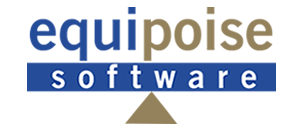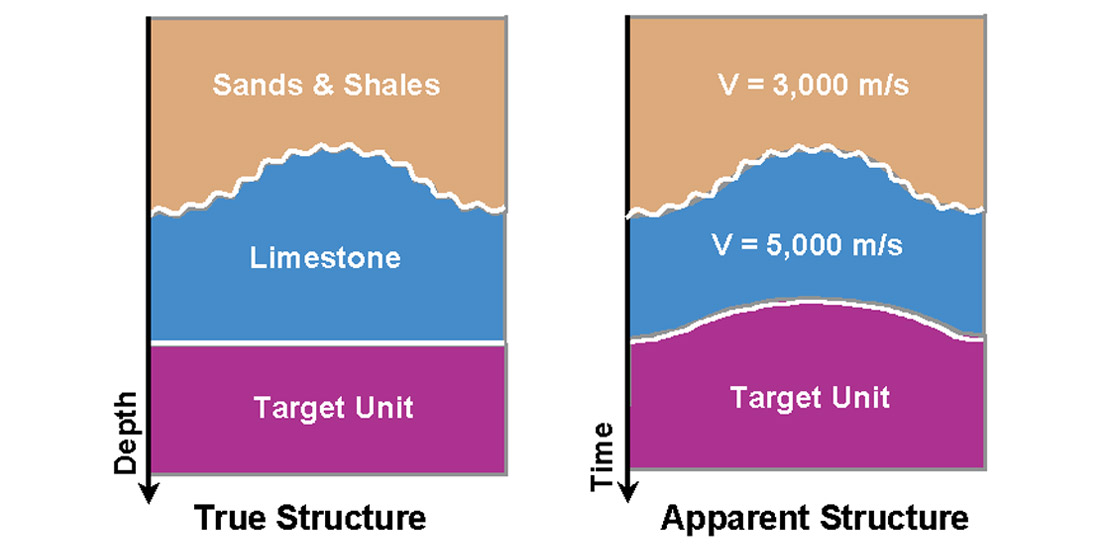In the first issue of our newsletters, we’d like to draw your attention to a trend within the geoscience community which we are concerned about. Arguably, it would appear as though many geoscientists around the world are using PSDM depth volumes for depth, instead of taking the associated time volume used to create the PSDM and interpreting that volume in the time domain to subsequently perform a time-to-depth conversion.
While using the PSDM for depth has the advantage of saving time in the workflow, the significant disadvantage is that the depth component of a PSDM uses ray-path velocities, which are typically faster than the assumed vertical velocities usually required to obtain accuracy in depth. This discrepancy results in the creation of artefacts within PSDM depth volume which do not correlate with a depth converted time volume. This can be evident, for example, that the PSDM will not sufficiently tie the wells when comparing the results against a depth converted time volume.
This month we’ve scoured the internet to find an article which discusses this issue in more detail. While the article was written over 20 years ago, despite advances in technology, we can’t escape the physics of the seismic experiment and the subsequent processing steps to simply ‘skip performing a time-to-depth conversion’ if we want to maintain accuracy when drilling, quantifying reserves estimates, or positioning our geohazards in depth.
This very interesting article describes various methods to perform accurate depth conversions, and includes how much sophistication is needed for a range of different objectives. The article also goes on to discuss how you can account for real geologic structure and stratigraphy, the significance of properly calibrating your seismic velocities, the importance of properly honouring well data versus seismic data, and the suitability for you to meet time and cost constraints.
We hope you enjoy the read!
If you’d like to know more about how Velit has been designed to encompass everything the article discusses, then click here. To contact us for a free evaluation, e-mail us on sales@equipoisesoftware.com.
Our software is provided by S&P Global (who we partner with for Kingdom) with perpetual and subscription pricing available on request. We offer a series of Teams meetings throughout the evaluation to help you quickly step up the learning curve and enable you to see the results for yourself. We also provide a series of depth conversion training courses which go into more detail than the information provided in the article that you can click here to find out more about.

